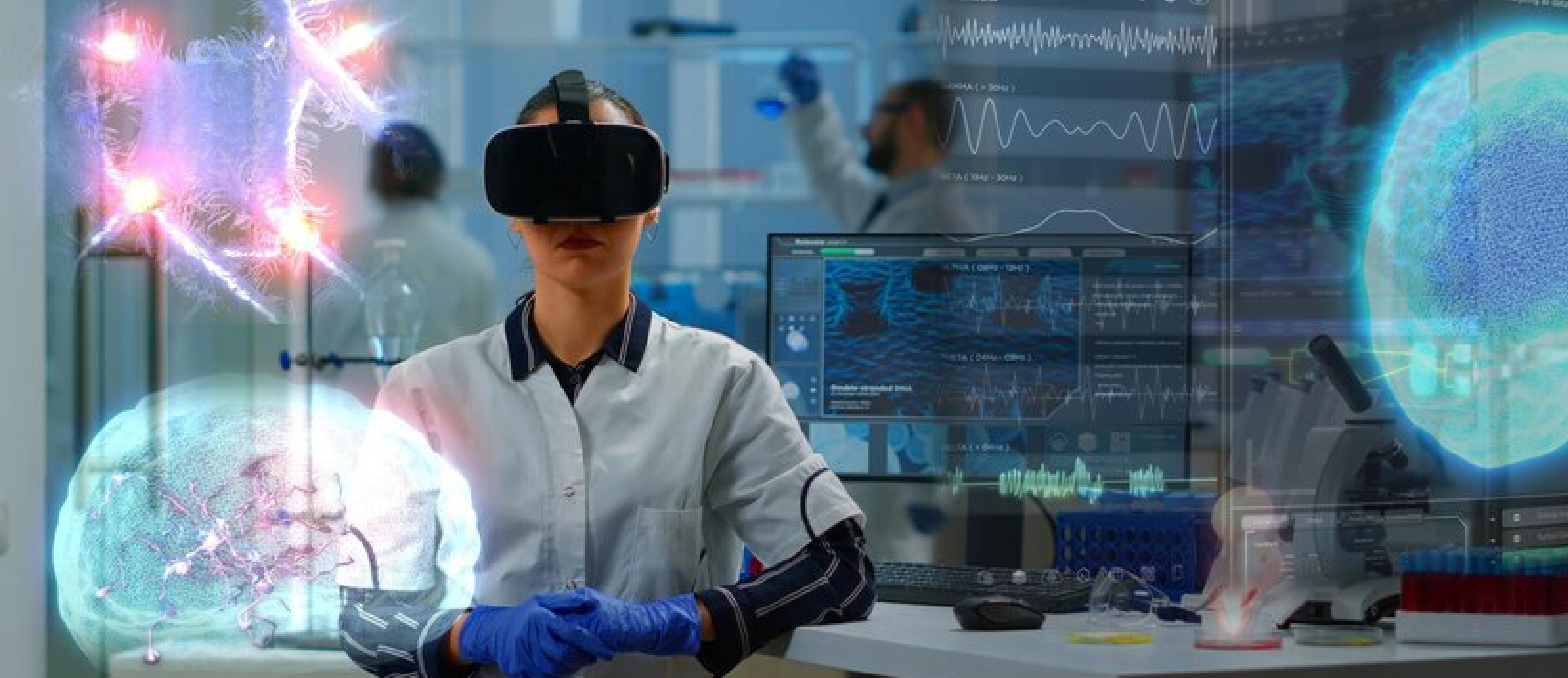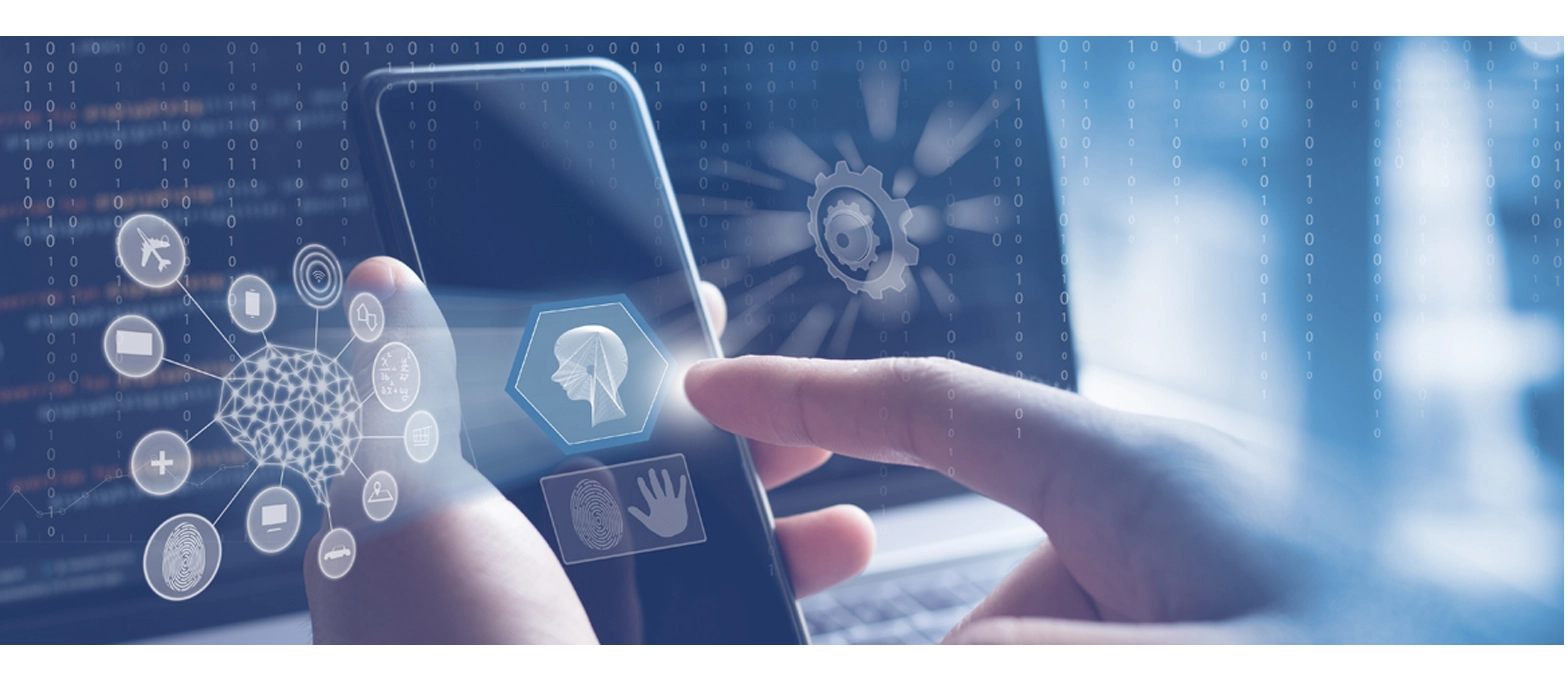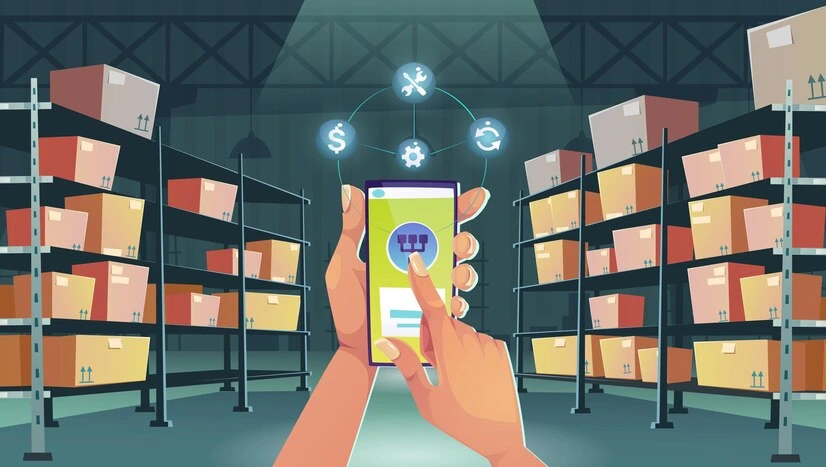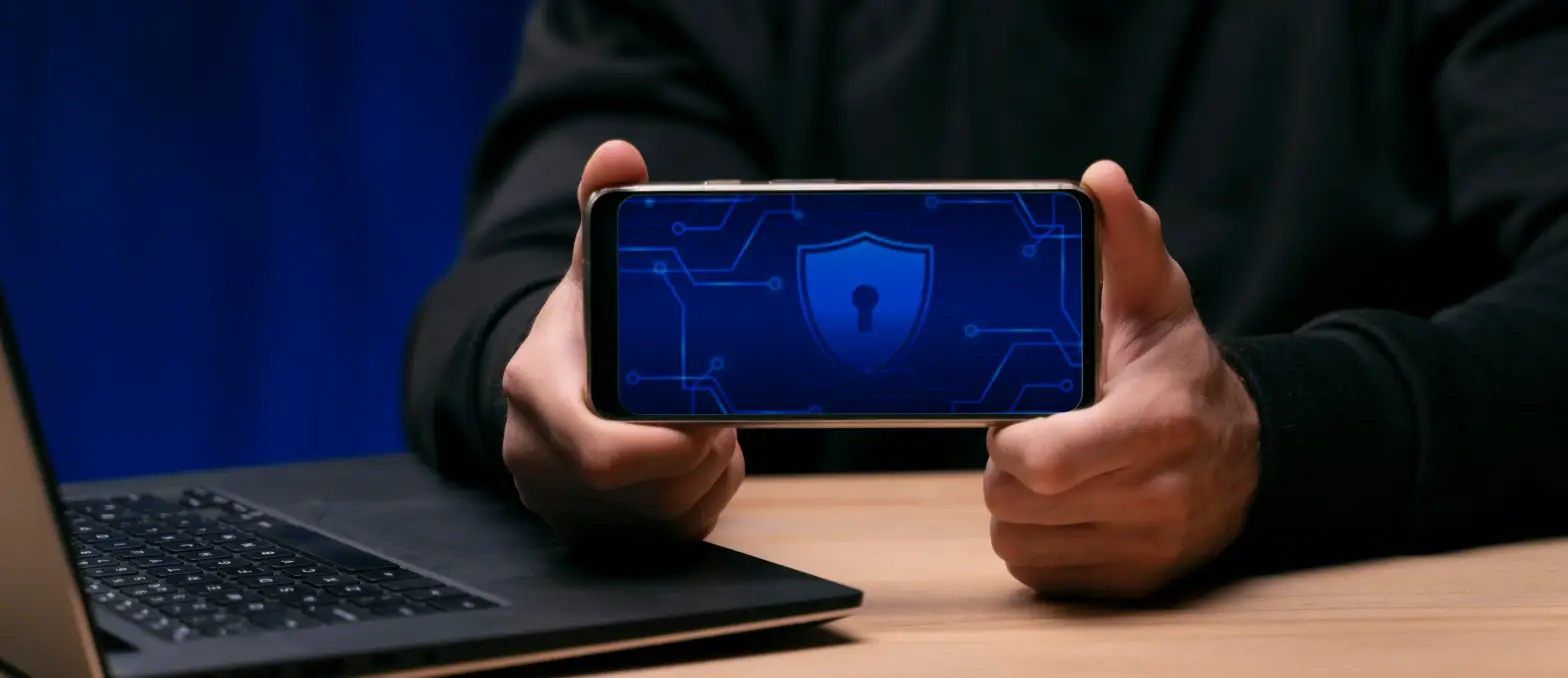Product engineering services faces change. New technologies like AI, robotics, 3D printing, and IoT offer possibilities before the unseen. A product engineering services company can design smarter products as these technologies embed into development. Optimize performance using data analytics, prototype and test virtually before building physical products, and leverage automation to scale innovation. As barriers to innovation fall away, we may see an explosion of new product ideas and concepts that improve our lives in meaningful ways. The coming decades promise to be a golden age of invention and discovery fueled by technological convergence. This blog examines some of the major developments likely to shape the future of software re-engineering services. It will help in reshaping how we conceive, design, manufacture, and interact with products for years to come.
What is product engineering?
Product engineering designs and tests products before mass production. Product engineering company transform customer demands and specifications into products that work, are safe, affordable and legal. The process of product engineering involves multiple phases. During the conceptual design phase, product engineers analyze customer needs, do market research and conceive ideas for new products. They define product specifications and design approaches that balance cost, manufacturability, and functionality.
In the detailed design phase, product engineers design each component of the product, determine appropriate materials and select components. They make engineering drawings and 3D computer models of the product. The prototyping phase involves making sample products and testing and refining the design. Product engineers build models, schematics, and prototypes to evaluate design options and improve the product.
Finally, the product testing phase ensures the product meets design requirements before it goes into production. Product engineers conduct rigorous performance, safety, environmental and reliability tests on prototypes to ensure every aspect of the design is optimized. The final product design that passes all tests is then ready for manufacturing.
Significance of Product Engineering in Shaping the Future
Product engineering shapes the future by creating technologies and products those impact lives, businesses, and the economy by transforming ideas into reality. They bring to market solutions to complex problems that improve efficiency, sustainability, and quality of life. Through innovation in products, product engineering services helps unleash new economic opportunities and market expansion.
Product engineers develop technologies to tackle major global challenges like sustainability, resource conservation, clean water access, renewable energy, health, and nutrition. They make environmentally friendly products, smart grids, electric vehicles, water filters, medical devices, and agriculture technologies that significantly progress solutions.
Product engineers use cutting-edge technologies like AI, 3D printing, nanotech, robotics, and IoT to build futuristic products that transform industries. As product engineers push technological boundaries, new paradigms emerge that shape human development. Today’s engineer’s products envision smart homes, self-driving cars, and medical advances that enable tomorrow’s world.
A product engineering services company develop technologies to tackle major global challenges like sustainability, resource conservation, clean water access, renewable energy, health, and nutrition. They make environmentally friendly products, smart grids, electric vehicles, water filters, medical devices, and agriculture technologies that significantly progress solutions.
Product engineers use cutting-edge technologies like AI, 3D printing, nanotech, robotics, and IoT to build futuristic products that transform industries. As product engineers push technological boundaries, new paradigms emerge that shape human development. Today’s engineer’s products envision smart homes, self-driving cars, and medical advances that enable tomorrow’s world. Product engineering services unlocks the possibilities of science and ultimately transforms society for the better.
Integration of Artificial Intelligence with Product Engineering
AI integration with software re-engineering services is a powerful way of transforming the design and development of products. AI tools are augmenting the capabilities of product engineers, enabling them to innovate faster and build better products. Artificial intelligence assists product engineers at every stage of the product design process from conceptualization to testing. Machine learning algorithms can analyze vast amounts of data, identify patterns and generate insights that help product engineers optimize designs. AI systems can also automatically generate and evaluate multiple design options to identify the best solutions.
During product conceptualization, AI enables product a product engineering services company to generate and evaluate a wider range of innovative ideas. AI-based design tools can produce multiple innovative concepts based on customer data and preferences. AI algorithms can then simulate and analyze the various concepts to identify the most promising ones for further development.
During product detailing and prototyping, AI tools powered by machine learning train on data from past successful designs to generate prototypes and product components with optimized performance. AI systems can assist with complex tasks like determining the ideal size, shape, and material properties of physical parts.
During product testing, AI-enhanced simulators and virtual testing environments enable product engineers to evaluate designs virtually before building physical prototypes. This speeds up the development process and reduces costs. As AI capabilities also continue to improve, integrating AI deeper into every step of product engineering will unlock even greater innovation and transform the very nature of engineering work.
Internet of Things (IoT) and Product Engineering
Product engineers solve big issues using new technologies. Their solutions shape tomorrow’s world. IoT has revolutionized product engineering services by enabling products to become smart, connected devices. IoT capabilities allow products to sense their environment, communicate with each other and users, receive and respond to commands, and provide data analytics. This transforms static products into interactive systems that can optimize operations and provide valuable insights.
IoT technologies have given rise to exciting possibilities for product engineers. Product engineers can embed IoT capabilities into products during the design phase to enable remote monitoring, remote access, and automatic notifications. For example, IoT sensors can monitor the performance and health of a product, detecting issues and notifying product engineers. IoT connectivity allows products to receive over-the-air updates to improve functionality and fix bugs, enhancing user experience over the product’s lifetime. IoT data from products in the field also provide insights that enable product engineers to refine future product designs.
The combination of IoT and product engineering is spurring innovation across industries as product engineers design smart connected products ranging from IoT-enhanced tools, machinery, and appliances to medical devices, home automation systems, and more. IoT also integrates the physical and digital worlds, giving rise to opportunities for a product engineering services company to develop the next generation of intelligent, data-driven products.
Additive Manufacturing (3D Printing) and Product Engineering
3D printing lets product engineers make complex products by adding layers, unlike removing material in the traditional making. This grants product engineers previously impossible design freedoms and open up new possibilities.
3D printing allows a product engineering services company to create prototypes and final products with intricate geometries, moving parts, lightweight structures, and conformal cooling channels that would be nearly impossible with conventional manufacturing methods.
Product engineers can design optimized components with latticed structures, internal channels, and embedded functionalities that save material, improve performance and reduce weight. For final products, 3D printing allows for more sustainable and customized production. Parts can be printed on-demand locally, minimizing transportation and logistics costs.
The integration of 3D printing with product engineering is enabling lighter, stronger, better-performing products across industries. It also is transforming what is feasible within the constraints of design and driving innovation by granting product engineers newfound design freedom.
Virtual Reality (VR) and Augmented Reality (AR) in Product Engineering
They can walk around, inside and through virtual prototypes to identify design flaws and opportunities for improvement that may not be apparent on 2D screens. This leads to better, more innovative product designs.
During testing, VR and AR simulations allow product engineers to virtually test products before building physical prototypes. Product engineering services companies can simulate how a product might perform under different conditions, stress levels, and environments. They can identify and fix issues at the design stage, reducing physical testing and cutting development costs.
For final products, AR applications provide interactive product manuals, assembly instructions, and maintenance support. Workers can see how components fit together and receive guidance overlayed directly onto the product.
As VR and AR technologies advance, they will play an increasingly prominent role in product engineering services. Immersive 3D design and testing environments, mixed reality workspaces, and digital product engineering services will also transform how product engineers innovate, communicate, collaborate, and bring smarter, more intuitive products to market faster.
Sustainable Product Engineering
Sustainable product engineering aims to design and manufacture products that minimize environmental impact and maximize resource efficiency. Product engineers integrate sustainability considerations into every stage of product development from conception to the end of life.
During design, product engineers specify sustainable materials that are recyclable, renewable, and reduce waste. They optimize designs for durability, reusability, upgradability, and easy disassembly at the end of life. During prototyping and testing, product engineers evaluate design options based on factors like energy efficiency, recyclability, use of toxic substances, and longevity. Simulation tools analyze sustainability metrics to identify the most eco-friendly design.
For manufacturing, Product engineering services companies specify production methods that minimize material usage, emissions, and waste. They design for supply chain transparency and traceability of raw material sources. For product use, product engineers maximize energy efficiency, longevity, and ease of repair. Products are designed to be easily upgraded to reduce replacement needs.
At the end of life, products are designed to be fully recyclable and allow the recovery of materials for reuse. Through each stage of development, sustainable product engineering aims to radically reduce environmental impacts while meeting customer needs.
Human-Centered Design in Product Engineering
The centered design places the human user at the center of the product development process. Instead of primarily using technical specifications and business goals, product engineers focus on understanding the actual needs, capabilities, and desires of the human users who will use the products.
They aim to create products that best meet those real human needs, abilities, and wants. Product engineers practice techniques like conducting user research through surveys, interviews, and usability testing to gain insights that inform designs that are intuitive, useful, and satisfying for users. Product engineers practicing human-centered design also focus on understanding the people who will ultimately use the product.
They conduct user research through methods like surveys, interviews, and usability testing to gain insights into user needs, pain points, and desires. The engineering companies develop personas to keep the user top of mind throughout the design process.
Product prototypes are tested early and often with real users to incorporate feedback and refine designs for maximum usability, satisfaction, and product adoption. Product engineers evaluate designs based on how intuitive, pleasing, and effective they are for the user.
The result of human-centered design is products that are highly attuned and tailored to the specific needs of users. Users report increased satisfaction, productivity, and enjoyment when products are designed with their unique abilities, constraints, and goals in mind.
Collaborative Product Development
Collaborative product development involves cross-functional teams of product engineering services companies, designers, marketers and more working together across organizations. They contribute their expertise at every stage to successfully create new products. Collaborative product development also aims to create a synergy that produces better outcomes than working in isolated silos.
Teams practice frequent and open communication to share information, gather feedback, and align on goals and priorities early. They use collaborative tools like project management software, cloud sharing, and video calls to help dispersed teams work effectively together.
During design and development, team members from different disciplines provide ongoing input and review to ensure usability, manufacturability, and other considerations are addressed from the start.
Big Data Analytics in Product Engineering
Engineers use big data analytics in developing new products. Various data sources help improve product design and performance. Data from past products give insights into how to make future products better.
Data from customer usage and feedback show which product aspects work well and which need improvement. Engineers analyze this data to spot patterns and extract useful information.
Analytics reveals details that help eliminate product defects, reduce development costs and time, and increase reliability. Data shows which features customers value most and least. Software product engineering services help decide where to focus engineering resources.
Big data technologies process enormous volumes of data from various sources. This data includes customer comments, product reviews, sales statistics, customer service records, warranty claims, social media posts, and IoT sensor data from product usage.
The large data sets are analyzed to gain insights into product improvements. Analytics reveals hidden correlations that human intuition often misses. It helps product engineering services companies determine what design changes lead to the greatest gains in customer satisfaction and product lifespan.
The result is better-engineered products that meet customer needs. Analytics transforms random data into useful knowledge for making product design decisions. It provides an evidence-based approach that improves the overall product development process.
Cybersecurity in Product Engineering
As more items become linked, software-driven, and internet-enabled, cybersecurity has become crucial for product engineers. Product engineers must build security into every stage of product development to protect products and users from cyber threats.
During design, product engineers identify potential attack vectors and vulnerabilities and design products with built-in security features. These features include encryption, access controls, authentication, and automatic software updates. They implement secure default settings and follow security best practices.
During prototyping and testing, product engineers conduct vulnerability assessments and penetration tests to identify security issues and ensure features work as intended. Any security flaws found are addressed before production.
For manufacturing, implement secure software development lifecycles, control system access, and secure supply chains to protect the integrity of products. For product use, automatic security also updates and patches fix flaws that emerge after release.
Product engineers must maintain a security-first mindset and design with the assumption that a motivated attacker will try to exploit any vulnerability. Product engineering services companies partner with security experts, follow security standards and keep up with the latest threats to ensure the safety and security of the products they create. Without proactive cybersecurity measures, even the best-engineered products can fail.
Develop innovative products by joining hands with the best product engineering team
Robotics and Automation in and Product Engineering
Robotics and automation technologies are transforming software product engineering services by assisting product engineers in various aspects of the development process. Robots and software tools are augmenting product engineers’ capabilities, improving productivity, consistency, and quality of outcomes.
During design, robotic software and AI-powered tools can generate and evaluate a wide range of design options to optimize for key metrics. These key metrics are performance, efficiency, and cost. Their “trial-and-error” capabilities exceed what humans can do alone.
During prototyping, robotic arms and 3D printers produce prototypes and components with precision and repeatability that humans cannot match. Robotics allows product engineers to test designs that are too complex, dangerous, or impractical for humans to prototype.
During testing, robotic systems run automated tests to generate more data faster than humans can manage. Robots can test products under extreme conditions and environments with consistent accuracy.
Industry 4.0 and Product Engineering
Industry 4.0 refers to the current trend of automation and data exchange in manufacturing technologies. It involves the introduction of smart, connected machines and systems that communicate and cooperate across the entire production value chain. Industry 4.0 is transforming software product engineering services by enabling data-driven, customized, and rapidly adaptable manufacturing.
Product engineers are designing products that utilize Industry 4.0 technologies like sensors, IoT solutions, AI, advanced robotics, 3D printing, and big data analytics. They are developing smart products that can be monitored, controlled, and updated remotely to take advantage of the connected, data-driven factory of the future.
Industry 4.0 enables mass customization by facilitating on-demand and flexible manufacturing runs of diverse product variants. Changes to product designs can be implemented quickly and easily. This data-driven manufacturing improves product quality by embedding data collection and analysis directly into production systems. Data from manufacturing processes provide real-time feedback that product engineering services companies can use to optimize product designs.
As Industry 4.0 transforms how products are made, product engineers will design products architected for the connected, data-driven factory of the future. It also allows product engineers to develop innovative product experiences enabled with digital product engineering services and end-to-end connectivity of value chains.
Challenges and Opportunities in Product Engineering
Product engineers face many problems. But they also get chances to make new things and help people. The big problems are short time to make products. Customers want more features. Costs must be low. Many rules product engineers must follow. Supply chains can cause issues.
New technologies create chances. Product engineers can work with startups and research groups. This gives them more skills and ideas. New materials let product engineers make better products. Helping the environment gives purpose to work. Big problems make product engineers think of new ideas. Following rules teaches discipline. Making technologies, business, and helping people gives work more meaning.
When product engineers solve big problems through work, they improve the future. Turning problems into chances is how progress happens. Product engineers need strength, openness to change, and a love of problem-solving. With the right attitude, product engineering services companies can see opportunities in the gaps between now and what could be.
Conclusion
Product engineering faces an exciting future with rapid technological developments changing the game. Advancements in AI, 3D printing, VR/AR, robotics, IoT, and big data will give product engineers more abilities to design smarter, innovative products. New material science discoveries will also expand the possibilities. Product engineers will be aided by automated design tools and intelligent assistants. While challenges remain, the opportunities for breakthroughs, transformational innovations, and living up to the responsibility of shaping a better world through better products have never been greater. The best is truly yet to come for software product engineering services, ushering in an era of unparalleled innovation.
FAQs
What is the basic of product engineering?
Product engineering makes products. Product engineers take what customers want and need to make a product that works well. The goal is to make a product that works right. Product engineers balance the cost and quality of a product. They make products work better, cost less, and be of better quality. Product engineers follow rules, communicate well, and solve problems well. These are important for product engineers. Product engineers turn what customers want into products that work well and cost the right amount of money. Product engineers make products customers love.
What is the goal of product engineering?
The main goal of product re-engineering services is to design and develop products that delight customers and provide value. Product engineers aim to optimize key product attributes like functionality, reliability, safety, manufacturability, and cost to create solutions that fulfill customer needs.
At a high level, product engineers strive for:
- Functionality: Products that work as intended and perform their core functions effectively.
- Quality: High reliability, durability, and minimal defects.
- Safety: Products that pose no unreasonable risks to users.
- Affordability: Cost-effective products without compromising on performance.
- Manufacturability: Designing for efficiency in production and assembly.
- Compliance: Meeting all relevant legal standards and regulations.
What type of engineer is a product engineer?
A product engineering services company is a type of mechanical or industrial engineer who specializes in designing and developing new products. Product engineers apply fundamentals of product re-engineering services, design principles, and technical knowledge to bring products from concept to commercialization.
While many other types of product engineers focus on a particular system or component, product engineers have a holistic view of the entire product. They are responsible for the product’s design, performance, reliability, manufacturability, and cost, and meeting all applicable standards.
Product engineers often work as part of multidisciplinary product development teams that may include designers, marketing specialists, manufacturing product engineers, supply chain experts, testing product engineers, and other roles. They act as the bridge between technical feasibility and market needs by translating customer and business requirements into optimal product designs.
Product engineers require a blend of technical and soft skills including mechanical or industrial engineering knowledge, design expertise, materials selection proficiency, prototyping experience, testing know-how, project management abilities, and strong communication and problem-solving aptitude.
What is the role of a product engineer?
The primary role of a product engineer or a product engineering services company is to design products that meet customer needs while balancing requirements for cost, quality, functionality, and manufacturability. Some of the key responsibilities of product engineers include:
- Developing product specifications based on customer and business requirements.
- Designing product components and selecting appropriate materials and parts.
- Creating engineering drawings, schematics and 3D CAD models of product designs.
- Building and testing prototypes to evaluate design options and identify areas for improvement.
- Conducting performance, safety, and reliability tests to ensure products work as intended.
- Analyzing producibility and recommending manufacturing processes.
- Overseeing initial production runs and resolving any issues that arise.
- Collaborating with cross-functional teams to continuously improve future product designs.
- Ensuring designs comply with industry standards and regulations.
Throughout the product development process, product engineers leverage their mechanical or industrial engineering knowledge, materials expertise, prototyping skills, and an understanding of manufacturing to optimize product performance while keeping costs affordable.












